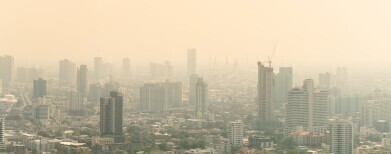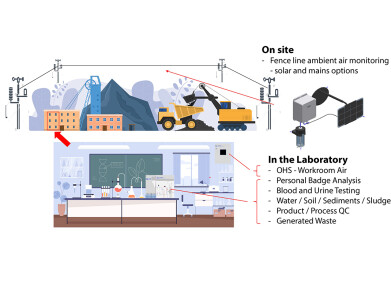Ambient air quality
Delhi to trial artificial rain solution to air pollution woes
Nov 23 2023
In the wake of persistent and hazardous air pollution levels in Delhi, India's capital is exploring an innovative approach to mitigate this environmental crisis: artificial rain through cloud seeding. This technique, which involves the aerial dispersion of salt particles like silver iodide or chloride into clouds to induce rain, is being considered as a potential solution to the city's dire air quality issues.
Delhi's air pollution, a perennial challenge, has recently reached alarming levels. The Air Quality Index (AQI) in the city has consistently soared past the 450 mark, almost ten times higher than the World Health Organization's recommended limits. Factors contributing to this include high vehicle emissions, industrial activities, dust, and agricultural practices such as crop residue burning in neighboring states. These elements, combined with meteorological conditions like low wind speeds in winter, exacerbate the accumulation of pollutants, creating a toxic environment for the city's residents.
The Delhi government, in collaboration with researchers from the Indian Institute of Technology (IIT) Kanpur, is proposing a cloud seeding project to alleviate the pollution. The project, awaiting approval from India's Supreme Court and federal ministries, aims to cover an area of about 300 square kilometers. The process involves spraying salt granules into clouds, which act as ice-nucleating particles, leading to the formation of rain. This artificial precipitation is expected to wash away particulate matter, theoretically improving air quality.
While the concept of cloud seeding is not new, its effectiveness in combating air pollution remains a subject of debate among experts. The method's success hinges on optimal atmospheric conditions, including adequate moisture and humidity in the clouds, and the presence of specific cloud types that grow vertically. The high cost and uncertainty of outcomes also raise questions about the viability of this approach as a sustainable solution to air pollution.
Additionally, concerns have been raised about the potential environmental impacts of altering natural processes through cloud seeding. Experts emphasize the need for more research to understand the long-term effects of this intervention and call for a multi-disciplinary approach to policy formulation in this area.
Experts argue that while artificial rain might offer temporary relief, it is not a panacea for air pollution. Effective and lasting solutions require concerted efforts to address the root causes of pollution, such as reducing emissions from vehicles and industries, and altering agricultural practices. Investments in cleaner technologies, stricter enforcement of environmental regulations, and raising public awareness about the health risks of air pollution are critical components of a comprehensive strategy to improve air quality.
As Delhi grapples with its air pollution crisis, the proposal to use cloud seeding as a remedial measure reflects the urgency of the situation. However, it also highlights the complexities involved in finding effective solutions to environmental challenges. The success of such innovative approaches depends on a thorough understanding of their implications, backed by scientific research and policy support. In the long run, addressing the fundamental causes of pollution remains key to ensuring a cleaner, healthier environment for the residents of Delhi and beyond.
Digital Edition
IET 35.2 March
April 2025
Air Monitoring - Probe Sampling in Hazardous Areas Under Extreme Conditions - New, Game-Changing Sensor for Methane Emissions - Blue Sky Thinking: a 50-year Retrospective on Technological Prog...
View all digital editions
Events
May 06 2025 Nuremberg, Germany
May 10 2025 Karachi, Pakistan
May 11 2025 Vienna, Austria
May 11 2025 Seoul, South Korea
Salon Analyse Industrielle & Instrumentation
May 14 2025 Paris, France





.jpg)

_(4427399123)-(2).jpg)











